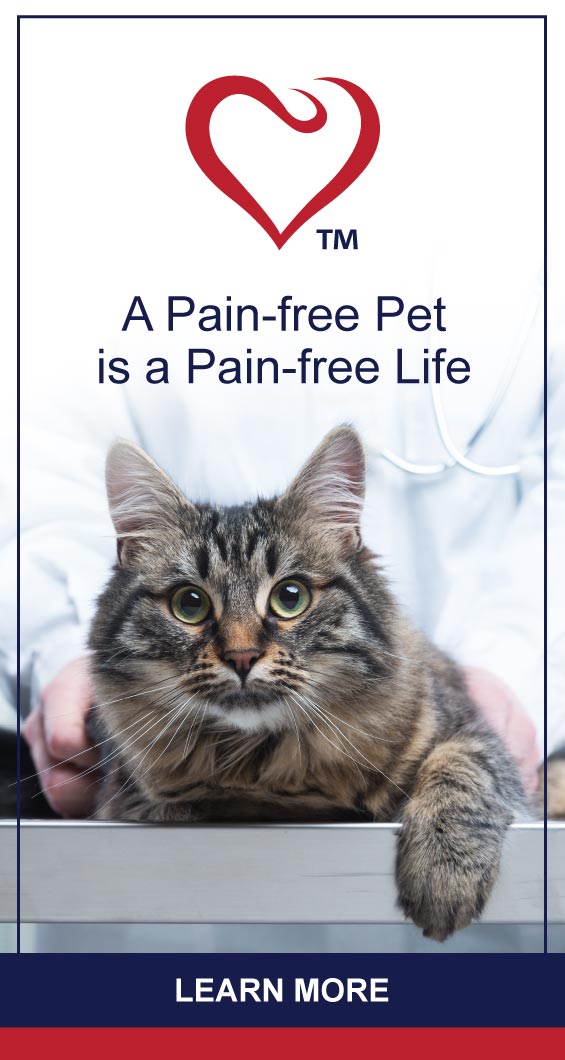HEALTH & WELLNESS

TRENDING

We’re excited and honoured to feature South Africa’s second largest independent animal welfare organisation on PetlifeSA.
OSTEOARTHRITIS IN CATS

Cats are natural survivors and masters at hiding pain, which means discomfort and illness often go unnoticed.
If owners and veterinarians can’t see any issues, no diagnosis can be made which means symptoms and pain caused by diseases go untreated.
Osteoarthritis (OA), also known as degenerative joint disease (DJD) is one of the diseases that are easy to miss.
Once correctly diagnosed, medication can relieve joint pain caused by osteoarthritis.
HOW COMMON IS OA?
According to numerous studies, many of which analyse radiographs, an alarming number of (especially older) cats suffer from degenerative joint disease in one form or the other. The studies have helped us realise that DJD is very common in cats and even more severe in older cats. Most affected joints include lumbar spine, shoulders, hips, elbows, knees and ankles.
OA CAUSES
Joints are cushioned by cartilage, a rubbery connective tissue, found at the ends of bones. When this cartilage starts to deteriorate it leads to inflammation and discomfort and the damage continues.
Natural wear and tear, joint injury as well as certain abnormalities may contribute to OA, but the specific causes are still unclear.
THE FOLLOWING MAY INCREASE RISK OF OA
- Obesity
- Trauma / injury, e.g. fractures or dislocations
- Certain breeds are more prone to
– Kneecap dislocation formally known as Patella luxation (e.g. Abyssinian and Devon Rex breeds)
– Abnormal hip joint development, formally known as hip dysplasia (e.g. Maine Coon, Persian and Siamese breeds)
– Abnormality of cartilage causing severe arthritis which affects multiple joints (the Scottish Fold breed particularly) - Acromegaly (unusual and uncommon): increased growth hormone secretion, caused by a tumour, leads to diabetes and/or arthritis
SIGNS OF OA
- Less mobile: jumping behaviour changes; stiffness in legs; struggles to use stairs, litter tray and cat flap, hesitates before jumping onto counters/out of windows.
- Less activity: increased sleeptime; decreased exploring and interaction; choosing more accessible sleeping spots.
- Grooming changes: less frequent; more time spent on affected joints; overgrown claws; a scruffy/matted coat.
- Change in character/mood: more solitary; irritable when handled, stroked or interacting with other animals.
- Inappropriate elimination: urinating and/or defecating in areas where they didn’t previously.
DIAGNOSING OA
- Mature cats (aged 7+) should be checked frequently and thoroughly and owners should communicate any changes and signs noticed to their veterinarian.
- A veterinarian should be able to detect issues during an examination. X-rays are recommended to make specific diagnoses and rule out other conditions.
- Blood and urine tests could help reveal other problems and help to ensure that the cat’s organs are able to cope with chronic medication.
MANAGING OA
Change your cat’s environment to improve quality of life.
- Place comfy, warm beds in easily accessible areas where your cat will feel safe
- Provide basic steps or ramps to reach higher areas
- Make sure water and food are easy to access
- Groom your cat and cut overgrown claws
- Provide a litter tray with a low side
- Ensure the cat flap is easy to use
DIET
- Manage your cat’s weight or seek help if your cat is overweight
- Ask your veterinarian about supplements such as fatty acids and decent glucosamine and chondroitin supplements to improve cartilage quality
MEDICAL TREATMENT
Non-steroidal anti-inflammatory drugs (NSAIDs) have been found very effective in treating pain and inflammation caused by osteoarthritis in cats. Your veterinarian will be able to administer the medication after telling you more about how it works and possible side effects it may have (some NSAIDs have minimal, if any, side effects). Sometimes NSAIDs can’t be administered in which case cat-friendly painkillers may be prescribed.
Ask your veterinarian which side effects to look out for and contact the clinic if you have any questions or concerns about NSAIDs.
Related Articles









